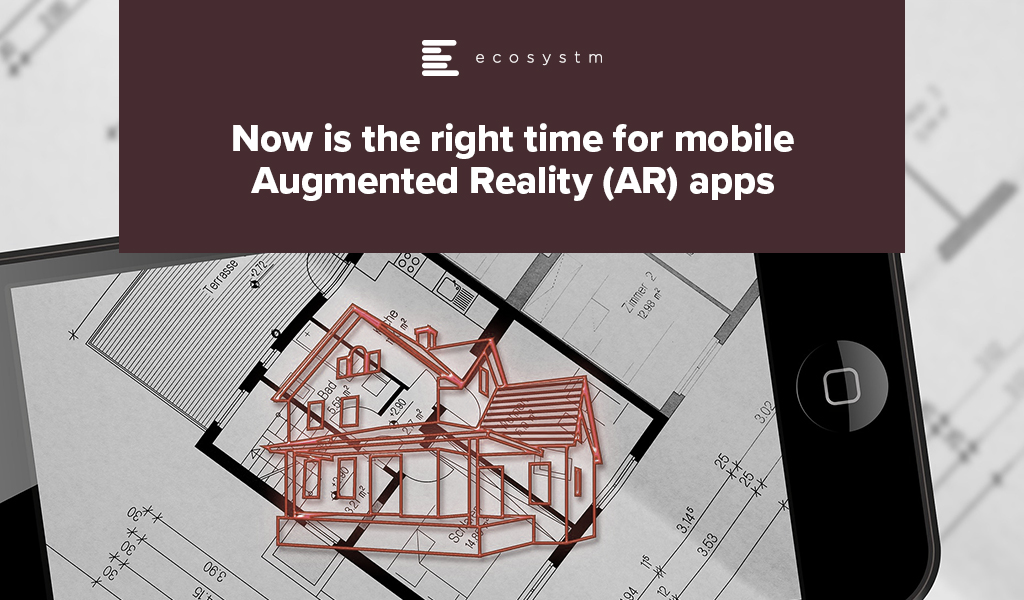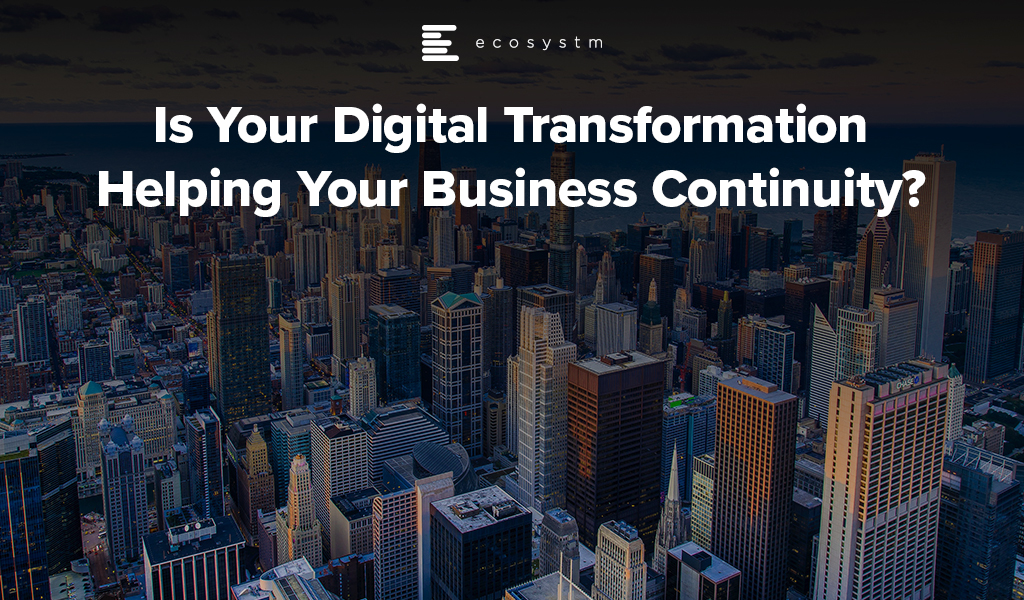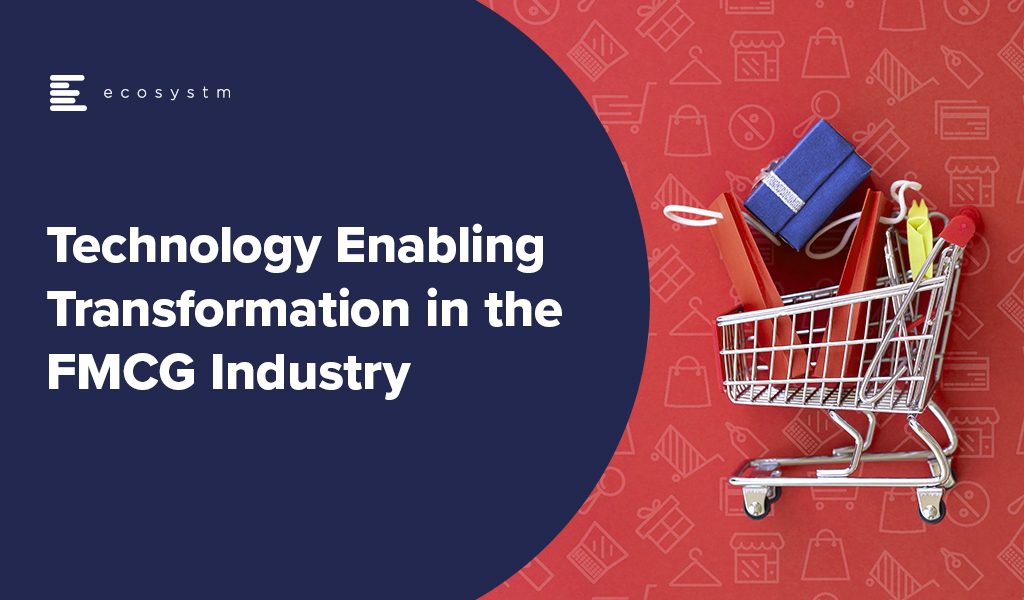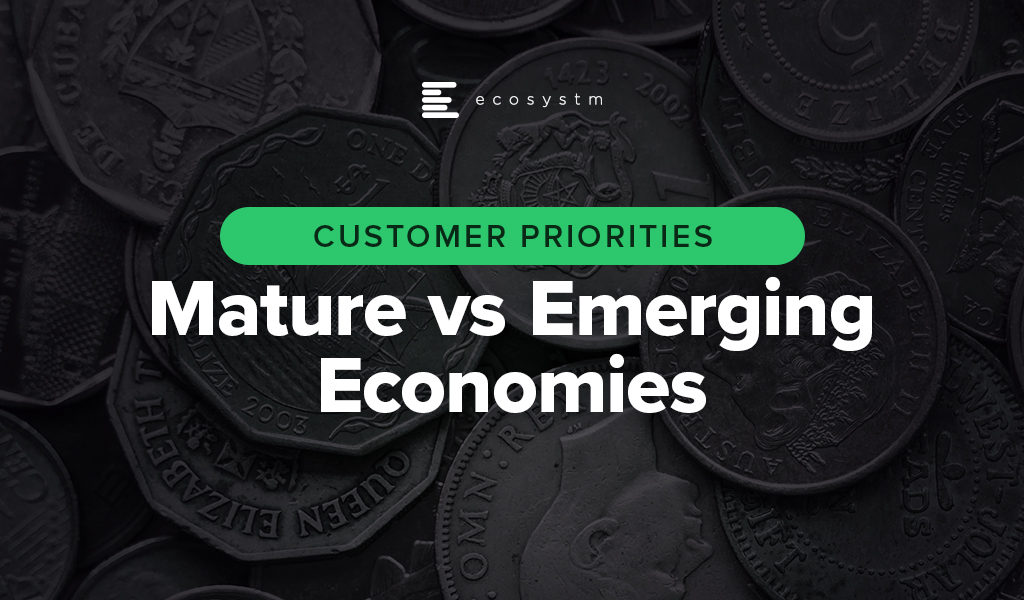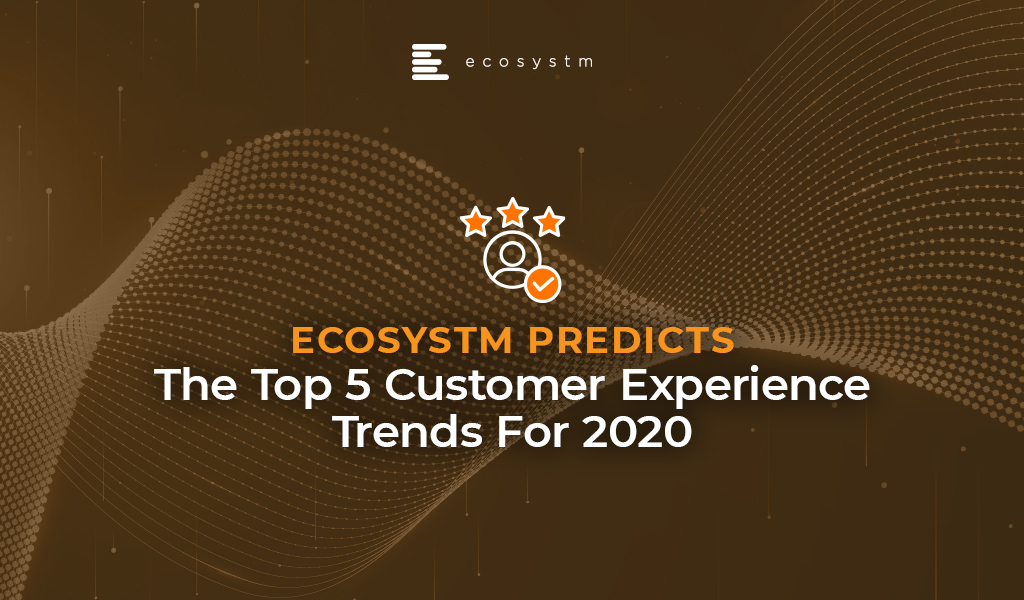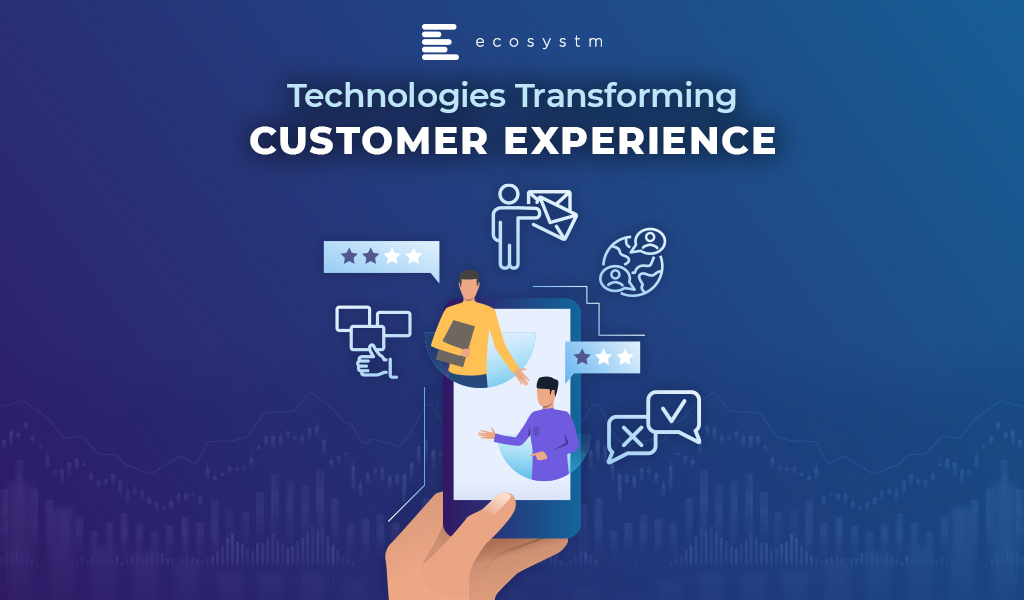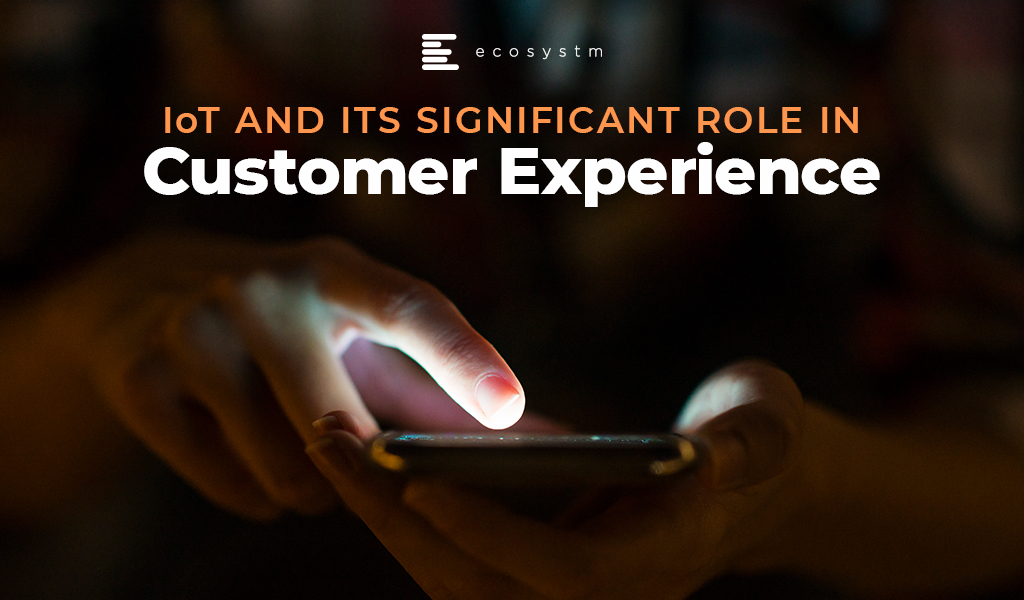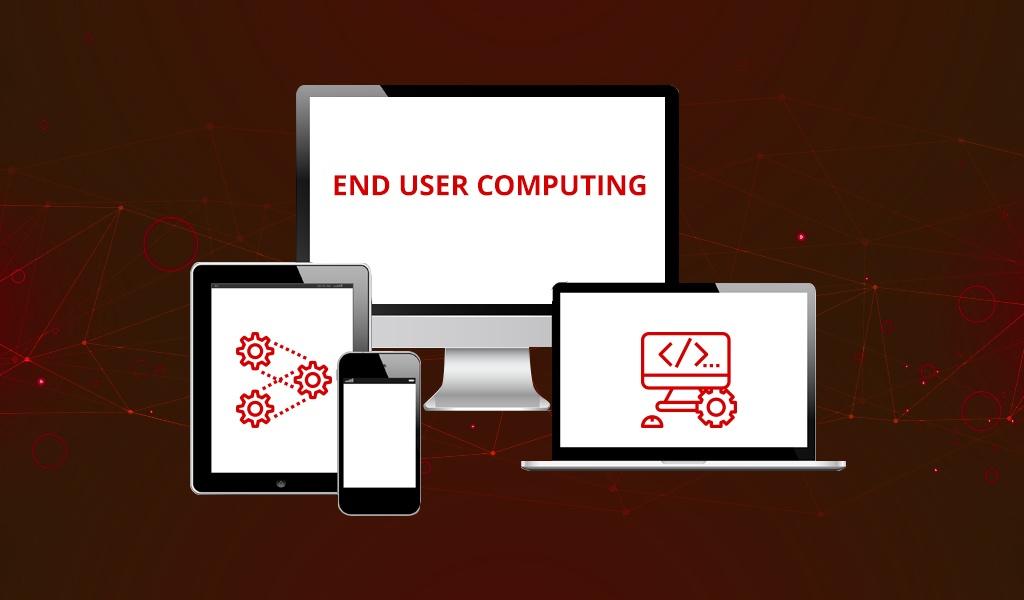Scenario one: I have two friends in their late 50s, home on quarantine in the UK. As they need exercise, it is a wonderful time for them to update their old Nordic cross-track system. They eyeballed the website, thought it was the same footprint and weight as the existing one that was upstairs in their home and placed the order.
The delivery man left the 100kg+ package next to their doorstep doing social distancing properly. Not only is it not portable but had to be constructed piece by piece in their living room as they could not carry the bigger parts up the stairs.
Scenario two: Friends who are seasoned travelers with wandering feet want to go travelling once quarantine is over. They want to go to a resort in Cabo San Lucas, but they cannot find a good travelogue of experiences and dining options at the resort other than Yelp or TripAdvisor with very two-dimensional reviews.
As you can see from the recent article in The Times, a number of people are taking this time to plan where they want to go.
These are two examples of why now is the time for implementing a mobile AR app solution.
Invest Now in AR
At this moment you have a captive audience with more time on their hands than normal, and eager to consume. And many are building home offices or making medium-term travel plans and need more than what a flat website experience offers them.
So now is the time for investment in augmented reality mobile apps. How many firms are seeing this and what has been their experience?
Based on the tech buyer feedback from the ongoing global Ecosystm Mobility Study:
- Only about 1% of organisations have a mobile AR app, with another 5% evaluating it in 2020
- Average current implementations tend to look at a CapEx spend of about 45% – however, those who are planning to implement a mobile AR app expect to pay about 53% CapEx
- 7 out of 10 organisations say that implementation cost was less than US$10,000
- 8 out of 10 organisations say the implementation took more than 3 months (with 4 out of 10 saying it took 6 months to a year)
Extending to digital experience
Traditional print publications already understand the need to extend the digital experience for readers. The New York Times has been rethinking how it can connect the print and digital reading experiences. In partnership with Google Lens, smartphone users can access additional information online that corresponds to the print version of their New York Times Magazine. In the next three months, all New York Times Magazines will have some features that are Google Lens-enabled.
It is a great moment for both product and experiential marketers to be taking advantage of time at home by using an augmented reality mobile apps to bring the product into the home or home office, and the experience to life in your own kitchen or living room. And in return, getting great real-time feedback on what customers are looking for.
We’ve all seen the demo of the IKEA mobile app on where to place your couch. But product location placement is missing from any number of key categories. This is including computer monitors and TVs, as well as office furniture and professional lighting equipment for that better quality of video con-call.
What other kinds of market engagement uses are there?
Packaging links to AR
Create custom “trackers”, either printed or on-screen icons, when scanned with a white labeled app to trigger a video or a 3D model overlaid on the real world. Design a scannable package with customer experience in mind and include tracking engagement and sharing links. Set up an AR trigger based on a packaging feature and invite the customer to scan the same with their phones. Note that you can also add AR as a feature into your existing Android or IOS app. Dependency on dedicated app or app plug-ins is gone. Brands can now leverage the potential offered by augmented reality using just a URL. Users can open the URL in any mobile-based browser and augment interactive digital content on their camera view.
Reverse product placement
As the opposite of how locations tried to link to Pokemon Go, your product could be an element in a popular Augmented Reality game. It could attract new customers who would link to more AR provided information on the product.
Weather as a factor
These types of apps can show what the weather may be like at a location. Possible app usage for showing residential real estate. It could show impact in a flood zone as to how much water may enter the area. Or it can warn people on urgent physical issues.
Practical advice before consumption
Too much time on your hands and hate your hair? See what the color will look like before you make a hair color mistake. Perhaps more AI than AR. Note that right now you may be able to buy hair dye. But you will likely not have access to the person who can repair any mistakes you make at this point. Think carefully.
Final Thoughts
Now is this time to engage bored consumers and eager potential users. Take advantage of what this uncertain time can bring to your firm. Use Augmented Reality as a benefit to create value and content stickiness for your customers.
The current state of the world is alarming. The COVID-19 virus is not only disrupting businesses and economies – it is taking away loved ones, it is separating friends and families, it is disrupting the education of young adults and children and it is seeding fear in communities. But while the media is dominated with doom and gloom at the moment – and we do need these reports – I believe it is worth stopping for a moment to consider the fact that if the pandemic happened ten or fifteen years ago, many businesses – and government agencies – would have closed down. You could argue that the world wasn’t as globally connected then as it is now. And to an extent that is correct – the numbers of air travellers increased up until the end of 2019. But even in 2005, the world was still a very global place – economies relied on cross-border commerce as much then as they do now.
Depending on your business or industry 10-15 years ago:
- Staff couldn’t have effectively worked from home. And if they did, collaboration would have been hard (if not impossible outside of the usual voice services). Teleconference services would have needed to be booked.
- Remote access would have been painful and slow – relying heavily on VPNs over slower internet connections.
- Software would have mainly been running in company datacentres – with very little SaaS-based applications. These applications were often designed for LAN access…
- Those lucky few with a Blackberry or iPhone might have had access to email – everyone else would have needed to go into the office to get work done.
But worse than this would have been our customer engagements. While eCommerce had healthy adoption by 2005, it often relied on very manual processes – and it was mainly focused on consumer products and services – B2B adoption was still a number of years away. And, for many businesses, it represented a tiny proportion of their revenue. Small companies didn’t often have the web presence to compete with the big players. But if I look at the big fast-food giants in Australia (e.g. McDonalds and KFC) – these companies didn’t have a web or mobile ordering until a few years ago, and even more recently for home delivery services. Any company that had to shut down their face-to-face contact would have likely fallen back on their contact centres – but even these would have been impacted as the ability to route calls to remote or home-working call centre agents barely existed then – so they would have been understaffed or closed due to an infection being discovered…
Today’s digital connectivity has the opportunity to save lives. Less physical contact means less people being exposed to – and spreading – the virus.
If this pandemic had happened 10-15 years ago, many small AND large businesses would have had to shut their doors very quickly. Very early in the cycle, businesses would have had to make the decision to shut their doors straight away, or risk accelerating the infection rates by having staff continue to attend the office or contact centre. So if there is one small positive we can take away, it is that our digital investments are paying off very quickly. The ability to continue to trade, continue to sell, continue to do business in such a market as we are facing today and tomorrow is priceless. I can purchase goods and services online, register my car without leaving my desk, upgrade or change my health insurance without speaking to a single human being. Most businesses have the ability to have their employees access many of their critical applications wherever they are located. Our accountants can still pay and send bills, HR can hire for open positions, product teams can continue to innovate on the products and services they offer.
Don’t get me wrong – business survival is not guaranteed. This is why I implored governments to aim their stimulus spending towards small and medium businesses digital initiatives – as cafes, retailers, bars and restaurants close down across cities, states and countries, many are now lamenting their immature online presence, their lack of delivery and their lack of pre-ordering. If you have any doubt about this, check your local Facebook group – it is full of small businesses putting up images of menus in the hope that customers will reach out directly to keep their businesses running. If these businesses are given incentives to build digital services quickly, they might see less of a slowdown in business.
COVID-19 will definitely stress test our digital assets and strategies. Just recently, the Australian government’s citizen-facing portal crashed as too many citizens logged on to register for welfare. This forced many people out into government shop-fronts – putting themselves, the staff and all connected families and friends at risk of catching the virus. I also heard today of a bank that called many of its staff back to the office as the VPN could not cope with the number of users and volume of traffic! If you have not already, you will quickly find out how your digital capabilities are performing – where you need extra capacity, where services are running smoothly, where you need to rethink process design or where you need to consider re-crafting this approach for the fully digital era.
But stay safe – listen to the advice of medical experts and act on that advice. A senior medical officer recently stated that social distancing is the only way that we will overcome this virus – so stay safe and stay home (if you can!). But also take the time to review your digital capabilities – start making moves now to ensure they help your business stay afloat – or your government agency to keep serving citizens in times of restricted trading or shutdowns.
The FMCG industry has always been competitive given the need to drive high sales volume because of the low profit margins of the products. As the industry faces changes – such as the demographics of the consumer base and the need to introduce newer sales channels – technology is playing an important role in ensuring that the organisations can remain competitive.
eCommerce Disrupting the FMCG Industry
The concept of online retail is said to have originated in some form in the 1960s. But with the growth of the access to the Internet in the 1990s and Amazon’s competitive business model, it has disrupted the retail and FMCG industries. As we see a steady growth in smartphone usage, digital payments, online banking and app-based platforms, online retail is becoming mainstream. While initially thought to be ideal for the purchase of durables and entertainment products and services (where price comparison is key), it has become common for FMCG companies to use eCommerce platforms. Even perishables are being purchased online with the rise in the number of online grocery stores. This is impacting the FMCG industry in a number of ways:
Change in Marketing Strategy
FMCG companies need to continue their traditional marketing strategy for in-store consumers. But at the same time, they need to reach out to a wider base of consumers who shop online. The profile of these consumers is different – younger and technologically savvier. They do not necessarily believe in brand loyalty. While the browse-to-buy ratio for FMCG products is high, they are having to invest in digital marketing strategies including personalised campaigns and presence in social media and online forums. Even packaging for in-store and online products need to be different for some products.
Increased Competition
An online presence means that your brand can reach a wider audience – this also means that the competition becomes tougher. Now global brands compete with brands from other countries as well as local brands on the same online platform. This raises the bar, with companies competing not only on price and product but also on delivery services and better customer feedback.
Increased Complexity of the Supply Chain
No longer can an FMCG company depend solely on trucks delivering their products to stores at a fixed time of day. As they play increasingly in the B2C space, they have to constantly be aware of seasonality and spikes. This means that their supply chain operations become that much more complicated, and they are having to spend more on logistics and transportation. There is also the need to handle a larger volume of data.
Changing Consumer Profile
As mentioned earlier, the consumer profile of the FMCG industry has changed to include younger consumers who want to shop online. It also includes consumers in newer markets made possible by eCommerce platforms. FMCG companies also have to cater to consumers who are conscious about product quality, the environment and ethics. This means they want to know where the products were grown or manufactured, their carbon footprints and generally want more traceability of the products they are purchasing. This has led governments to come up with guidelines to protect consumer rights. Recently, the UK government issued guidelines on the quality, labelling, standards and food safety including the right logos, health and identification marks.
The global Ecosystm AI study reveals the top priorities for FMCG companies, focused on adopting emerging technologies (Figure 1). It is clear that their key priority is to handle the competitive market by focusing both on the consumer and the supply chain. Supply chain optimisation through demand forecasting ensures that they are not managing extra stock, and simultaneously not losing out on customers because of lack of stock. This just-in-time inventory management includes initiatives such as pricing optimisation in response to market demand, competition and – especially in the case of perishables – ensuring that stock closer to the use by date is cleared.
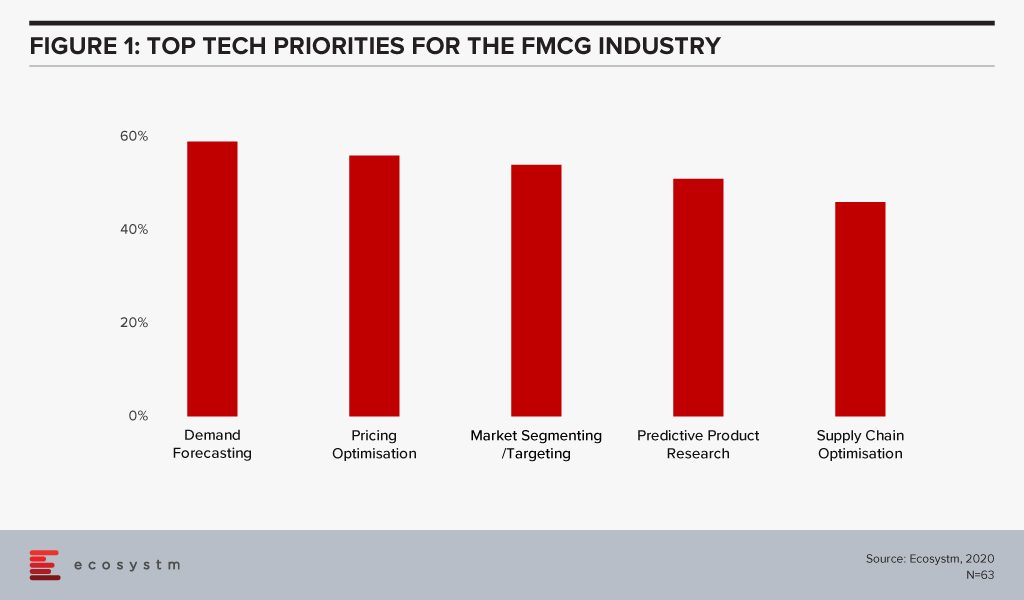
Technology as an Enabler of FMCG Transformation
The one advantage that FMCG companies have today is they have access to enormous customer and inventory data. As a result, they are able to leverage several emerging technologies to transform.
Digital Marketing
One area that is transforming the industry is digital marketing which includes multiple aspects such as search engine marketing, video marketing, social media activity and email marketing. While several technologies come together for a digital marketing solution and AI is a key component of the solutions, there are platforms that provide an end-to-end solution.
Digital marketing is most effective with a targeted group of customers and when organisations can identify digital or social champions. Johnson & Johnson’s Babycenter.com is a good example of how creating a digital community can help market products. The core idea behind the website is to give expecting and new mothers advice on early childhood. While on the surface it appears disassociated from Johnson & Johnson, the site almost exclusively carries their advertisements. This gives them a targeted base to push their products to. Dollar Shave Club is another example of how brands can leverage digital marketing. Their social media engagement has been so successful that they got bought over by Unilever. The digital campaign includes incentivising members with their products for posting about them on Instagram or Facebook.
Blockchain
FMCG companies are investing in Blockchain and digital ledger technologies for track and trace functionalities and operational efficiency. The technology not only helps manage the supply chain better by effective shipping timelines maintenance, delivery management and inventory management; it also helps build trust in a brand. It helps in compliance management, reduces the number or need for middlemen, easier handling of cross-border transactions and brings about an end-to-end accountability.
Danone initiated a Track & Connect service for their baby formula using Blockchain for transparency and traceability to show the authenticity of their products to parents and for a better customer experience. FMCG companies will benefit immensely from the farm-to-fork accountability concept initiated by Agriculture.
AI
From predictive analysis to machine learning to deep learning, AI is bringing a lot of benefits to FMCG companies. AI is enabling companies to discover gaps (both in their consumer interactions and in the supply chain) and make their processes intelligent – including demand forecasting, supply chain optimisation, personalised product offerings, social media analytics, consumer sentiment analytics and recommendation engines.
FMCG organisations are analysing internal and external data sources for both sales and improved customer experience. As FMCGs are forced to sell online to remain competitive, they have access to a high volume of the consumer as well as supply chain and inventory management data. Coca-Cola remains one of the leaders in the FMCG market by leveraging this data, including product research and social data mining. Even their vending machines are looking to leverage AI for personalised offerings and for loyalty programs.
The need to enhance the customer experience has also seen innovations like the Maggi Chatbot – “Kim”- that helps customers learn about Maggi recipes, ingredients, and dietary requirements, through Facebook Messenger.
FMCG companies that cannot afford to invest in technologies such as AI also have the option of leveraging the technology offerings of their online retail platform. eBay offers analytics as a service to the sellers – offering them data, metrics, and analytics to help them succeed. They also introduced computer vision technology to help sellers create clearer and more attractive images for the platform.
In this competitive market, we will see FMCG companies – and not just the big global brands but also the local producers – embrace more technology.

In the Top 5 Customer Experience Trends for 2020 Ecosystm Principal Advisors, Tim Sheedy and Audrey William say that emerging Asia will catch up with the mature economies of the world in their customer obsession. Have emerging economies really embraced Customer Experience (CX) fully or are they just responding to the hype? Do consumers really care about how they connect with brands or do organisations think product offerings is the main differentiator? The business priorities of global organisations reveal that there is a universal focus on improving CX (Figure 1). It is the top business priority across emerging and mature economies, though mature economies are still ahead in their customer focus. Organisations in emerging economies prioritise revenue growth and improving Employee Experience (EX) more than those in mature economies.
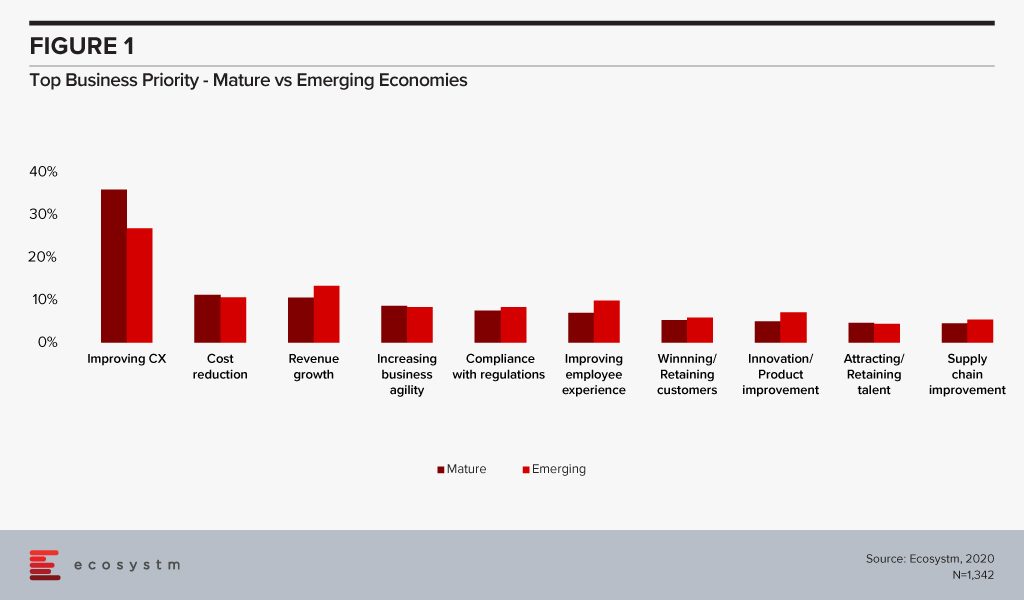
Delivering Better CX – The Challenges
Whether these organisations can actually fulfill their CX goals, depends on what their key challenges are. In the end, what consumers want is a consistent CX – across multiple channels and touchpoints. Organisations in emerging economies seem to find it more challenging to drive a more consistent CX (Figure 2). Information siloes are a challenge across all organisations. But organisations in mature economies cite training of their agents as their biggest challenge.
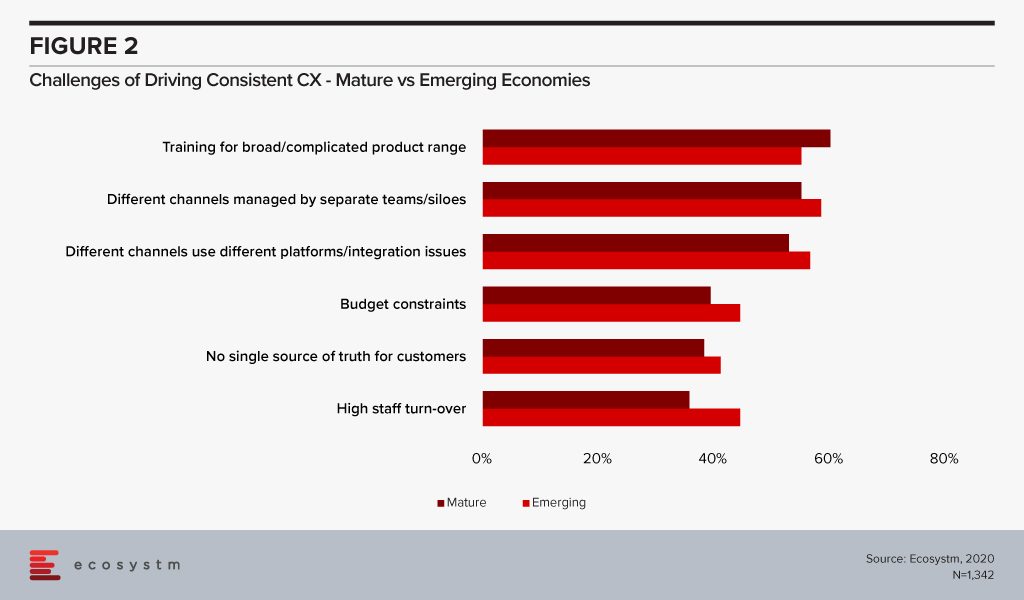
A desire to improve CX must be backed with both vision and budget. The vision should be for the entire organisation to have a single source of truth – not just for the employees – but also a common source of truth that is accessible easily and consistently by customers, across multiple channels. Without this, customer self-service measures will be inadequate. Increasingly customers will want to engage with brands when they want to (very often beyond working hours), how they want to (avoid lengthy voice calls) and where they want to (web and mobile apps). Interoperability of enterprise systems and a robust knowledge base are important factors.
How do Organisations Improve Service Delivery?
If we compare the top CX measures by organisations in mature and emerging economies, we notice a clear difference in priority. In mature economies, organisations appear to have a clear roadmap. They focus on the customers first; followed by empowering the staff to perform their jobs better; invest in technology that will enable both; work on process optimisation; and finally set KPIs and metrics to evaluate the efficacy of the CX measures in place. Also, what they are increasingly doing is setting CX KPIs across the entire organisation – involving all stakeholders. A customer-focused business is one where everything is second to the customers and that should be built firmly into the organisational culture.
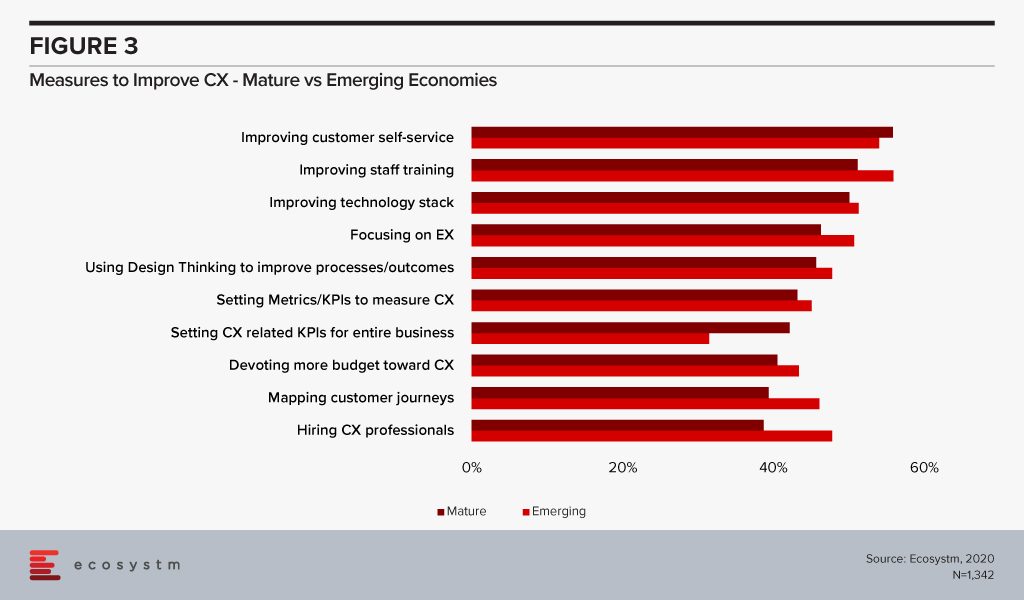
In emerging economies, organisations do not appear to follow a clear roadmap in their CX measures. While self-service is an important aspect of their CX programs, they are more tied down by improving their customer service staff capabilities. They are more challenged by high staff turnover (Figure 2) and appear to be focused on their employees in multiple ways – hiring experts, improving EX and investing in staff training. What they do far less than their counterparts from mature economies is setting organisation-wide CX KPIs.
Web apps are still the most important self-service CX touchpoint, followed by mobile apps. However, emerging economies are ahead when it comes to the importance they place on mobile apps for CX. This is reflective of the high mobile penetration in emerging economies, and the propensity to use mobile devices for all transactions – social and business.
We have seen that organisations in mature economies set CX KPIs more consistently. What are the top CX metrics and are there any differences based on the maturity of the economy (Figure 4)?
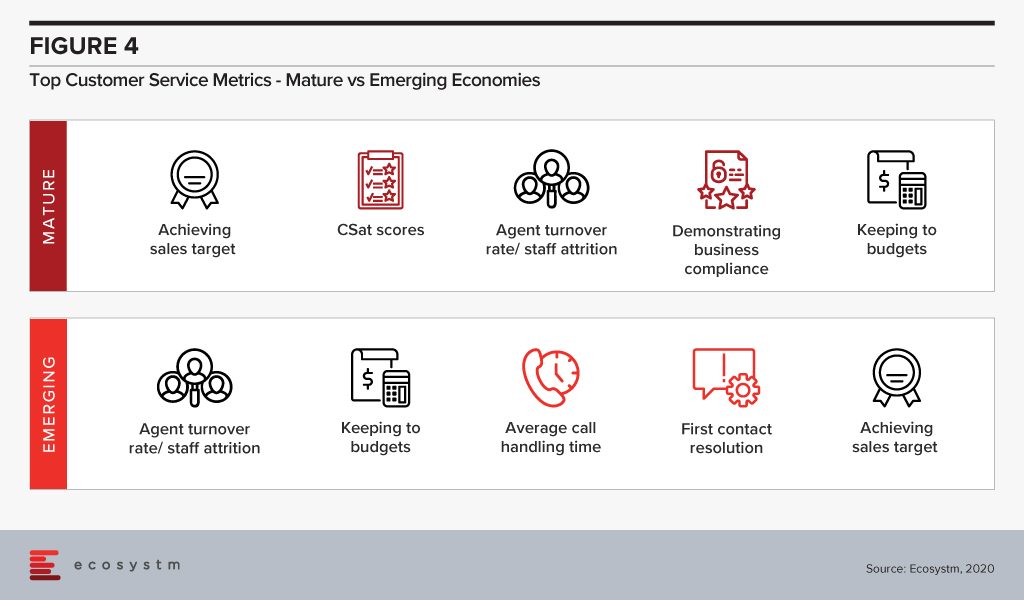
Organisations in emerging economies, continue to be more concerned about attracting and retaining employees. In fact, when asked about their security concerns, these organisations cite agents leaving with data as the key challenge. In mature economies, the key security challenge is improper use of confidential customer data, which can be handled best by continued staff training. In emerging economies, while organisations measure individual areas such as average call duration and first contact resolution, they do not measure customer satisfaction, in its entirety, using CSat scores, for instance. Organisations in mature economies are better at setting KPIs for their CX initiatives and tying them down to outcomes beyond the customer service teams – such as sales and adherence to compliance requirements.
Organisations in mature economies are focused on CX, but to become truly customer-obsessed they need to:
- Evaluate what will enable them to deliver better customer self-service – it is not only about apps, but also about the knowledge base
- Create a clear CX roadmap, focused on the multiple stakeholders and the technology – the steps have to be focused and not ad-hoc
- Inculcate customer obsession across the entire organisation – not just the customer-facing teams
Increasingly organisations are looking to improve customer and employee experience over other traditional metrics such as growing revenue or reducing costs. Organisations are transitioning from business metrics to customer experience (CX) ones, and employing CX leaders. 2020 will see many businesses make significant breakthroughs in improving the CX.
The top 5 Customer Experience trends for 2020
Here are the top 5 CX trends and the related technology markets in 2020. It draws on the latest data from the global Ecosystm CX Study that is live and ongoing on the Ecosystm platform and based on qualitative analyses by Ecosystm Principal Advisors Tim Sheedy and Audrey William.
-
Asia will Catch up with North America and ANZ in Customer Obsession
Many Asian economies – particularly those in Southeast Asia – have not needed to focus too much on CX. The proportion of businesses starting to map customer journeys is accelerating, and there is a growing focus on making those journeys easier, more effective and more enjoyable. We are seeing this play out in the levels of interest in – and deployment of – cloud contact centres. Australia and New Zealand have been leading the deployments in the last two years. Deploying cloud and using machine learning and AI at the core to understand how to deliver personalised CX is part of a wider CX strategy for several organisations.
In 2020 we expect large organisations in Southeast Asia and North Asia to transform their CX and contact centre capabilities and make the move to cloud-based contact centre environments.
-
CX Initiatives will Dovetail with Broader Digital Ones
Many businesses have taken a bimodal IT approach to their technology platforms – driving customer-centric changes at pace while keeping their back-end systems slow. In the drive to make the entire business fast and innovative, these back-end systems are being modernised. But over 90% of businesses have not yet seen a customer or business benefit from this digital agenda.
This will change in 2020 as more businesses get some competitive advantage from the digital initiatives they are driving inside of their business. This will be driven by the linking of the customer-centric technology initiatives with the back-end ones. This means that customer applications will be infused with data and analytics from other systems, making them smarter and increasing the potential for automation and AI to drive down costs and increase personalisation and customisation.
-
Hyper-personalisation will Move from Concept to Reality – Powered by Customer Journey Analytics
The idea of creating unique experiences for each customer has been discussed for years – but few businesses are really doing it today. 2020 will see businesses outside of the top 5% experiment and deploy hyper-personalised CX. It will move from the top web brands to mass market as more companies invest in automation, predictive analytics and AI.
But hyper-personalisation is not possible without Customer Journey Analytics. Businesses need to understand the end-to-end journey of each customer to understand how to personalise it. Therefore, Customer Journey Analytics will take centre-stage in 2020. The challenge for years has been that customer teams have focused on the traditional inbound and outbound interaction with the customer. Brands now need to understand and personalise the experience before the customer interacts with the brand and after they are done interacting with the brand. The ability to apply machine learning and AI to offer insights to predict the movement and journey of the customer will be a significant focus – and challenge – for customer teams. Customer Journey Analytics will allow brands to deliver that “frictionless” service.
-
There will be a Renewed Focus on Compliance and Security in CX
With the recent banking royal commission hearings in Australia to GDPR and other global regulations around privacy and customer data handling, customer teams will now have to make sure that all forms of voice and non-voice interactions are monitored close to 100% of the time. Very few customer teams do that today and are at risk of non-compliance. As monitoring can be labour intensive, there will be a need for organisations to invest in analytics and AI applications around compliance and monitoring.
The recording of customer calls means that highly sensitive information could be stored for years and the risk of the contact centre breaching regulatory compliance requirements enhances. Solutions today have various ways to block the recording of key phrases or sections and some solutions apply APIs to the flow of the recording. As soon as the agent enters sensitive information such as credit card details, the recording stops to resume after the sensitive data is blocked or deleted. That way the sensitive conversation is not recorded or heard by anyone monitoring the call. Contact centres must adhere to this strictly, but few do. Businesses also need to know real time if an agent is misinforming the customer. Contact Centre Outsourcers will also have to re-look at how compliant they are and how much they have invested in securing customer data. There will be greater pressure on them to take on greater risks and share the risk burden with their clients.
-
Businesses will Use AI and Analytics to Measure CX
The drive to improve CX has every business and government department measuring the experience at every opportunity. A one-minute transaction in a store can prompt a five-minute survey asking for feedback. As a consequence, customers are experiencing survey fatigue. Surveys are also not the best way to measure how customers feel after they have interacted with a brand. Already, many will not participate unless there is a discount or incentive, which eats into future margins. Smart businesses will begin to use AI to detect emotions and mood, and analytics to measure experiences.
Download Report: The top 5 Customer Experience trends for 2020
The full findings and implications of the report ‘Ecosystm Predicts: The Top 5 Workplace of the future Trends for 2020’ are available for download from the Ecosystm platform. Signup for Free to download the report and gain insight into ‘the top 5 Workplace of the future trends for 2020’, implications for tech buyers, implications for tech vendors, insights, and more resources. Download Link Below ?

Brands are not built overnight, and today’s customers tend to regard a brand’s worth by the innovativeness of the products and services and by the customer experience (CX). CX is by no means a new concept but has gained significance and organisations focus on ways to stand out from the competition and drive deeper engagement with their customers. In today’s ‘Experience’ economy CX is key to attracting new customers and retaining the ones the firms already have and cuts across the entire organisation – vertical marketing, strategy, product development or technology. Every business today needs to ‘delight’ its customers – offer a substandard experience and your brand might not survive long.
The global Ecosystm CX study discovered that improving CX is a key business priority for over 70% of organisations across industries – even in industries that are not considered customer-focused. These organisations were also asked why driving a consistent CX was challenging.
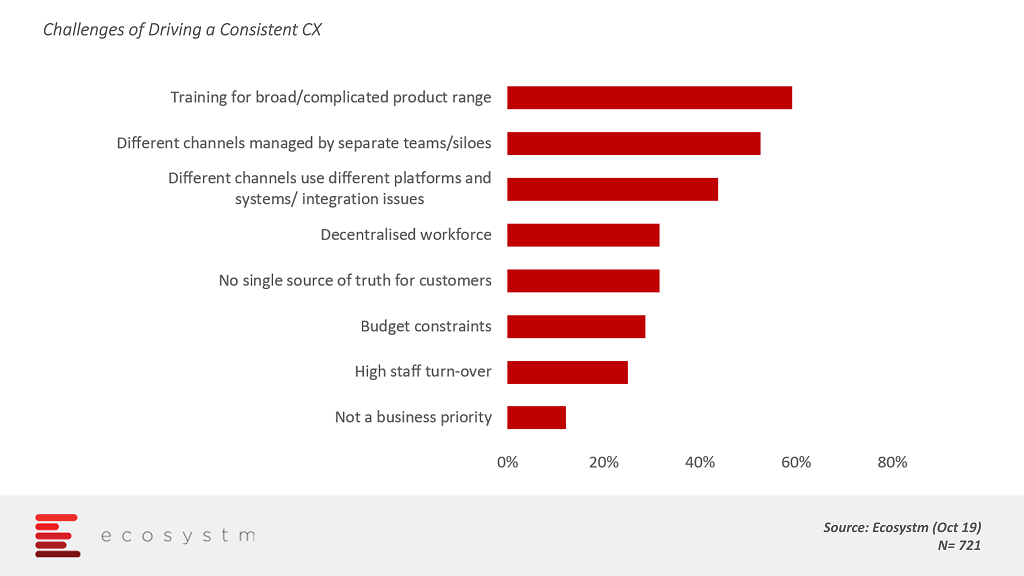
The key challenges boil down to managing the different stakeholders within the organisation – giving visibility and knowledge on all product offerings; managing the siloes created by each department and; in the end not being able to provide customers with one single source of truth. While many of these challenges are business-related, technology can be a key contributor to enhancing CX.
Technologies that can help you improve CX
There are many technologies that allow organisations to provide better CX, but the key to these technologies is how they collect, classify and provide actions on customer data. This is where AI comes into the picture, and why AI is at the heart of many CX offerings, making sense and aiding in the decision making around customer data.
AI-Enabled IoT
AI-enabled IoT devices are helping to enhance Customer Experience. The sensors in IoT devices such as wearables or personal assistants produce data which can be processed to derive useful insights, activity patterns and develop personalised communication. AI is improving the ability to take IoT generated data to personalise and customise actions and communication. For example, customers in gyms and fitness clubs can share their wearables data with their fitness trainers to customise their exercise routine and provide dietary recommendations.
Similarly, cars can be embedded with sensors which assess the users’ driving habits. This can then be used to suggest improvements to driving style or adjust insurance premiums based on how they drive.
Progressive Insurance, for instance, offers its customers discounts based on their driving through its “Snapshot” program. Progressive is using its usage-based-insurance (UBI) telematics programme to monitor how its car insurance customers drive. Using an ODB telematics dongle and machine learning, the insurer is able to judge how a driver is performing on each journey.
Location-Based Targeting
With location-based tracking technology and GPS systems on smartphones and devices, more businesses are working to enable and provide geo-location services to customers. This presents opportunities to offer personalised shopping experiences and customised promotions and offers to the customers. Businesses are already using geo-location services to extend offers to customers – such as cinemas and theatres pushing notifications on movie timings and available discounts when customers are in the vicinity.
Location-based services also help to enhance the actual shopping experience. Lowe’s has an app which allows their customers to navigate the large warehouse-like stores, helping them find products faster and easier. The app called The Lowe’s Vision: In-Store Navigation app works using a combination of VR and location-based services.
Customer-Centric AR and VR
AR and VR technologies are enhancing the way customers engage with businesses. Companies adopting AR/VR can distinguish themselves from the competition by introducing higher touchpoints and deeply personalised experiences designed specifically for their customer journey. The retail industry has been at the forefront when it comes to experimenting with AR and VR technologies, in the customer space. Retailers have rolled out applications and services that lets consumers virtually try makeup, clothing, accessories and seek out the best look for them.
Financial institutions are also leveraging AR and VR to build customer-centric solutions for self-service and user training. Citibank worked with a mixed reality technology company to develop a trading platform combining 2D and 3D working environment to extrapolate insights from data. Traders work with hundreds of financial instruments, and with the mixed reality workstation, they can quickly identify market hotspots that they should be focusing on. The consequences – better trades!
The hospitality industry is also leveraging AR to improve CX, AR-based menus is a good example. Various fine dining restaurants have started offering AR based food menus which can display virtual food items and live 3D models of food to accurately represent both the appearance and the serving portion.
Obviously, the entertainment industry will leverage mixed reality to the fullest. For instance, The New York Times leverages VR for storytelling where readers can visualise the events described in some editions of the newspaper. The technology thus allows the description of the setup of a story making the viewers witness an emotional connect with the characters.
Voice capabilities for a seamless experience
With the advent of digital voice assistants and voice recognition AI, voice recognition has opened up avenues and opportunities for businesses to enhance the way customers interact with them whether through mobile apps or their call centres.
Nowadays, voice-capable apps enable customers to interact with services very easily. A good example is Starbuck’s My Barista app, which allows customers to order via voice command or messaging. The coffee chain expanded its application by incorporating voice features to boost speed and convenience for placing and processing orders.
In conclusion, implementing technologies in a business could help businesses change the way the customers see and respond to a business. In addition to this, Improving customer service and using technologies can significantly reduce human inaccuracy, improve employee confidence and rapidly improve the character of a brand. By bridging the gap between a company and its client’s, businesses are becoming CX oriented and are dedicating themselves to enhance CX.
Besides the above, which technologies do you think are beneficial in enhancing your CX?
Let us know in your comments below.
Organisations are increasingly focusing on customer experience (CX), and it is overtaking pricing and product development as the key brand differentiator. The global Ecosystm CX study discovered that improving customer satisfaction is the key business priority across industries – even in industries that have not had a traditional focus on customers such as Manufacturing and Construction.
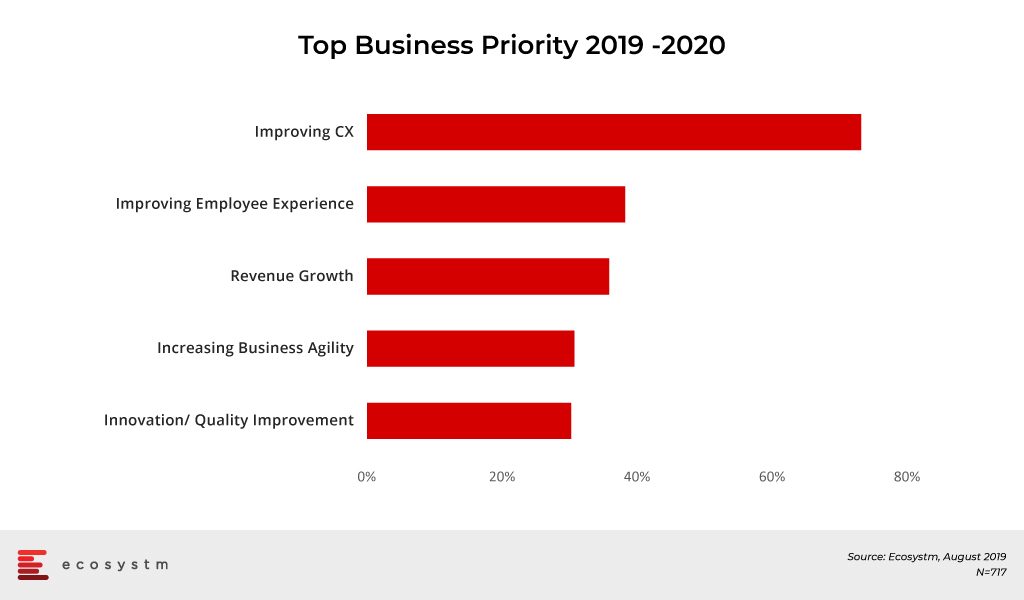
IoT is already impacting CX
We should keep in mind that IoT customers are not just those who enjoy the advantages of a Smart Home or the patients that share health and wellness data from wearables and medical devices with medical professionals. IoT customers are also the Maintenance Director of a Manufacturing plant floor, the Field Service technician using a predictive maintenance application, the Purchasing Director, the Marketing Director or the Product Director who use sensor data from connected products around the world in an intuitive and easy-to-use platform to improve usability or to sell more.
IoT can improve CX on multiple counts
Let’s see some examples:
- The right IoT sensor and actuator can boost customer satisfaction. For instance, by installing intelligent IoT sensors in the physical store environment, retailers can collect contextual data such as sound, temperature, or traffic patterns and will uncover how physical elements of a location correlate to customer satisfaction.
- IoT devices like wearables or smart home devices with good features improve the quality of life and have revolutionised CX.
- Effective IoT connectivity management is key to a successful IoT deployment. IoT connectivity enriches communication with customers too. The sensors and IoT devices that are inbuilt into products can feed data back regarding usage patterns and even detect problems. This data can be used to the manufacturer’s advantage allowing them to send across personalised communication to customers.
- IoT platforms with Artificial Intelligence (AI) components facilitate analysis of the ways customers are interacting with their devices over time, and helps identify frequently and rarely used features, allowing the building of better devices and applications fitted better to customer needs.
- IoT applications like condition-based monitoring allows the prevention of failures before they occur rather than waiting for problems to arise first. Connected devices can schedule predictive maintenance, detect issues before they debilitate functionality and diagnose problems accurately. When connected to a powerful AI-based workforce-management solution, companies can optimally schedule a technician by balancing skills, asset location, parts, technicians’ locations and traffic.
- IoT aids CX through faster Customer Service/Customer Support. Intelligent IoT devices itself could communicate an issue to a support team, even if the customer is unaware of one. Based on this information, a support team could then take several pre-emptive actions, which could include either notifying the customer or even rectifying the issue before the customer is affected. IoT sensors may be able to predict problems before they surface. Perhaps a piece of equipment exhibits certain symptoms before it breaks down. If the IoT device could send an alert to an engineer warning them about the potential problem, the equipment could be fixed before the problem leads to any downtime.
Designing an IoT Product Strategy centred around CX
Here are some points points to keep in mind when designing IoT products with a better user experience.
- The data that you havee gathered from the usage of your products can be used to develop new products. You can figure out what part of your products can be improved upon and then pass on this information to your product development team.
- Never introduce a User Experience (UX) based functionality that does not comply with the core values that the IoT product aims to provide.
- Since IoT-enabled devices come equipped with several sensors, they can easily capture loads of data regarding product motion, biometrics, air moisture, temperature, weather, etc. The product should be designed in such a way that the device makes optimum use of this data to learn deeply about the user and start taking smart and automated decisions on its own.
- Focus on making it easy for the customer to personalise the interface of smart products.
- Think beyond the usual interfaces that are based around screens. Combine with other technologies like AR, Voice Recognition, etc to obtain the desired output functions.
- Your IoT device design should make things simpler and not introduce more complexity into the equation. They should be designed in a way that it involves a minimal amount of training.
- Design with the intent of keeping machine-to-machine interaction at the maximum and autonomous behaviour at the minimum.
- Place the centre of control in the hands of the users. The interface design should make them feel like they run the show. One of the best ways to do this is by enabling remote user interfaces.
- Get information about the time gap between procuring a product and using it, and the date when the product is up for replacement.
- Combine IoT and AI for a better CX.
IoT is no longer in its infancy. The technology is here, available and ready to help organisations connect better to their audiences. There are already millions of users enjoying the benefits of and working with IoT devices. The possibilities of improving CX via IoT are indeed monumental. To keep up with market expectations, IoT vendors must be convinced that IoT will have tremendous positive impact on their relationships with their customers.
IoT vendors should be transparent and inform customers that they are using their usage data to optimise the design of products and services and to significantly improve customer satisfaction.
What are your views? Let me know in the comments.
For most companies, End-User Computing (EUC) is considered an expense to the business. EUC strategies are typically exercises in cutting costs – with often not much more than lip service given to the needs of employees (or employee personas). I know – I help companies write these strategies, and the costing component is always the piece that gets the strategy over the line.
But the winds are changing. Employee Experience (EX) is taking off as a serious business initiative. For example:
- Edmunds.com wrapped the traditional Facilities and Human Resources functions into a combined WEE Team which represents Workplace and Employment Experience. They engaged in a campaign to rid the company of the term “Human Resources”
- Airbnb has a dedicated team to “drive the company’s health and happiness”
- Nitro has “turned old-school HR on its head and instead created Employee Experience (EX)
In our upcoming CX research, the early data is showing that EX is the number two initiative for businesses across the globe in 2019. And for information workers, the technology that sits in front of them is a HUGE component of their experience – and their ability to get and stay productive.
Productivity Should Be The Focus Of Our EUC Strategies
Smart businesses understand that. They allow employees to choose (or bring) the devices that they need to remain productive. While desktop PCs might not be making a comeback, they are increasingly being adopted as an alternative to the “laptop as one device” strategy that many businesses embrace. Sometimes a powerful computer with a big screen (or multiple screens) is what people need to get the job done. Other times a small form factor desktop is perfect. Employees may need tablets or smartphones. And other times they need regular laptops, convertibles, or 4G connected laptops. Smart businesses also focus on seamless security – knowing that security is a key enabler of productivity. We are seeing that “The best, most secure device for the job” is taking off as a EUC hardware strategy in businesses that are striving to build a productive and enjoyable employee experience. This helps them to keep employees productive and will help them attract and retain the best talent.
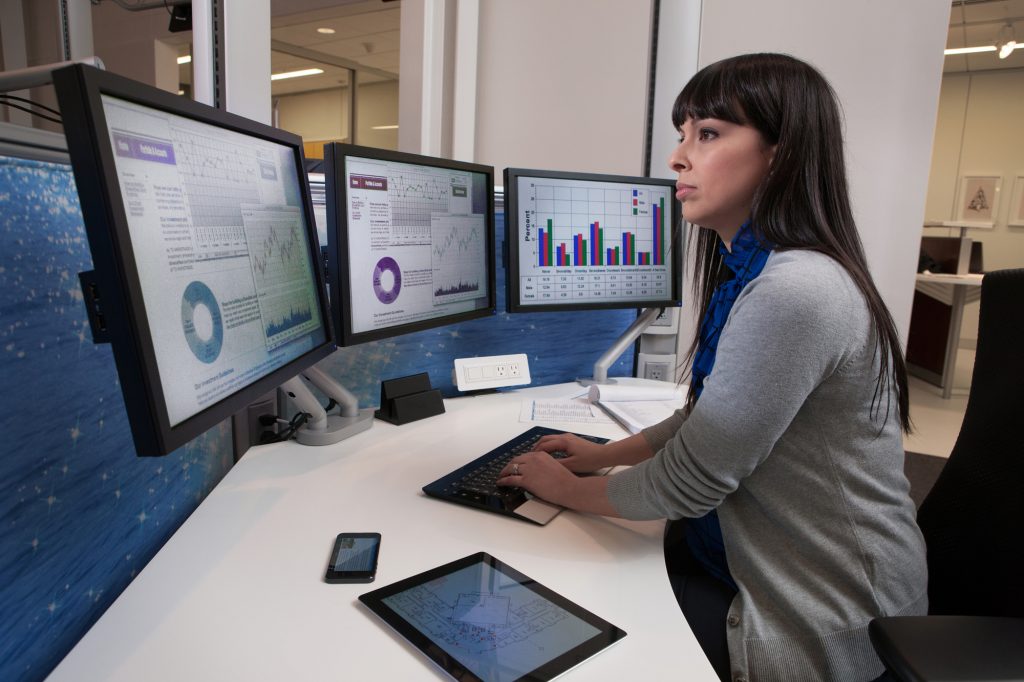
And EUC goes beyond the device to the entire user experience
Collaboration initiatives often disappoint. Limited adoption, and limited interoperability between applications limits effectiveness. There is often a disconnection between the collaboration system and how it helps employees hit their goals. Microsoft is currently rebooting its collaboration strategy – and has created a more modern system that more closely mimics the processes of a typical information worker (Teams). Slack is also taking the world by storm – as it is a collaboration tool that helps people the way they work today – it doesn’t require any training.

IT Operations professionals need to take a fresh look at EUC – but this time within the context of the other initiatives in your business. Do you already have a team focusing on EX? Are there initiatives you can help with – or piggyback on? There is real academic research proving the link between happiness and productivity – or the “state of flow”. IT holds the key to productivity – and therefore happiness – for information workers in particular – it’s time to step up and put employee experience and productivity – not costs – at the centre of our IT end-user computing strategies.


